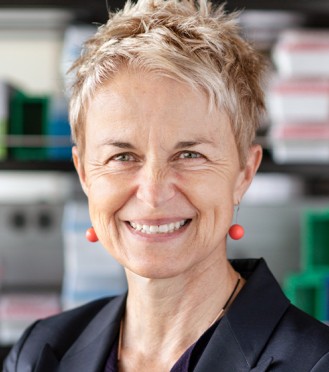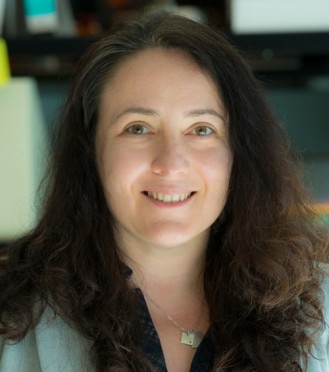Gladstone NOW: The Campaign Join Us on the Journey✕
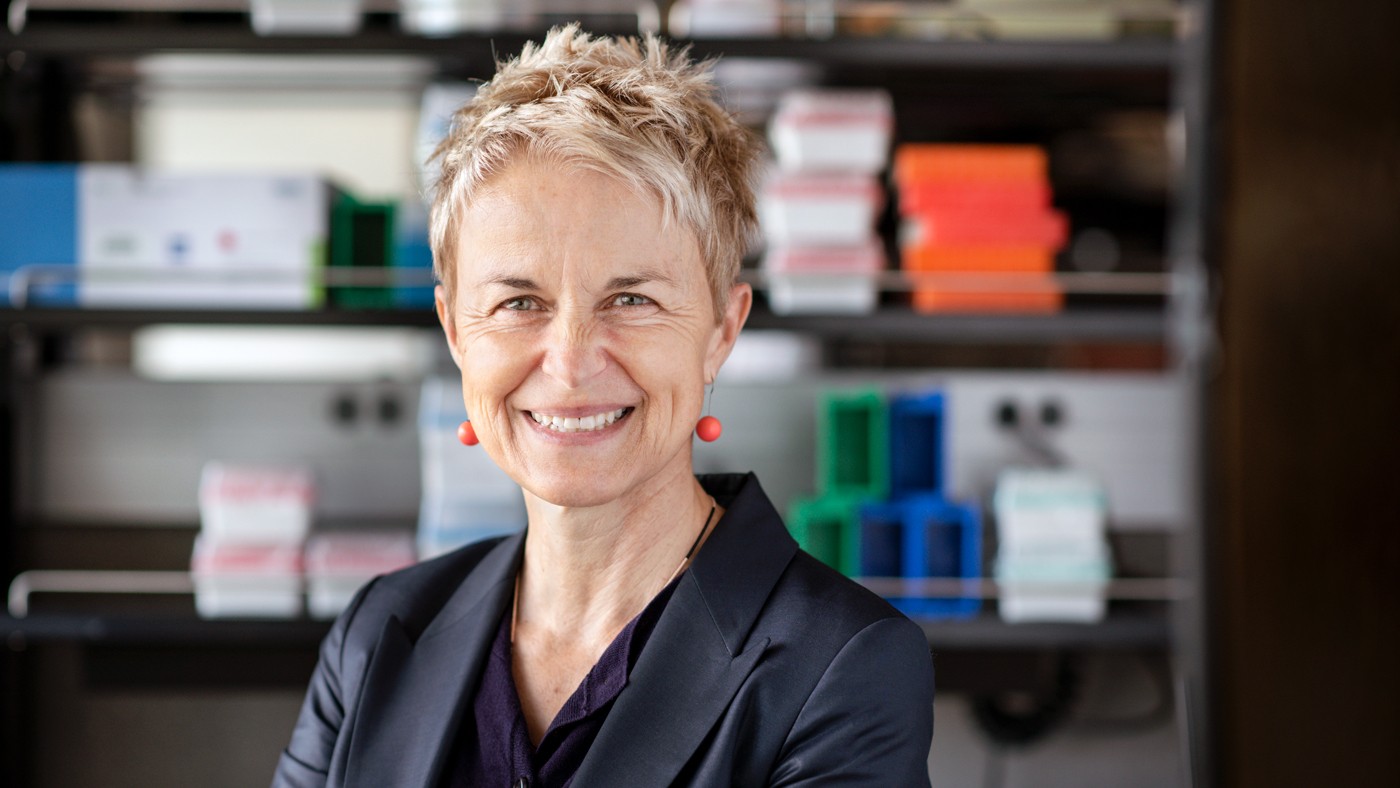
Melanie Ott shares her team’s learnings and achievements from the COVID-19 pandemic
Earlier this year, the World Health Organization declared an end to the global health emergency for COVID-19. This announcement was quickly followed by the US federal government’s plan to end its own public health emergency declaration for the SARS-CoV-2 virus.
Of course, SARS-CoV-2 is still with us. It is also a matter of when, not if, the next pandemic will emerge. These realities mean that the research advances made by Gladstone scientists over the last three years will continue to impact efforts against existing and new viruses for years to come.
Melanie Ott, MD, PhD, director of the Gladstone Institute of Virology (GIV), reflects on the early days of the pandemic, her team’s biggest contributions to COVID-19 research, and the new directions they are taking to understand the underlying biology of viruses, including coronaviruses and HIV.
What Was It Like in the Early Days of the Pandemic?
It was the end of 2019 and we knew that the virus was circulating in China. We were watching it nervously, but we had no way to put our hands on it. There was no sequence, there was no sample that we could test or anything. As soon as the sequence became available and it was clear that it was not going to be contained in China, we immediately pivoted part of our efforts to include SARS-CoV-2.
We started building our BSL-3 facility here, which allows us to safely culture the virus so we can study it and make a contribution. At any other institution, this would've taken six months until the decision was made to make this pivot. At Gladstone, the decision was made immediately.
We built a whole network of contacts with all the BSL-3 facilities in the Bay Area—at UC San Francisco (UCSF), Stanford, and UC Berkeley. We decided early on we didn't want to duplicate or compete. We wanted to synergize and help each other, and it was hugely beneficial. We still meet monthly with the UCSF team and, from time to time, with the bigger group.
How Did Other Gladstone Scientists Get Involved?
All the progress that we made in these past three years emerged from collaborations between people who are used to working with viruses and from people who are experts in other parts of biomedical research.
For example, we started to work instantly with Bruce Conklin, MD, and Todd McDevitt, PhD, at the Gladstone Institute of Cardiovascular Disease, because early on, there was an indication that SARS-CoV-2 was affecting the heart.
Now we know that cardiovascular symptoms are one of the major symptoms for Long COVID. But at the beginning, there were still many open questions about whether there is a connection. My colleagues Warner Greene, MD, PhD, and Katerina Akassoglou, PhD, focused on microcoagulation during infection and found a much-needed new treatment approach based on Katerina’s long-standing work in the brain. GIV investigators Leor Weinberger, PhD, and Sonali Chaturvedi, PhD, pivoted their therapeutic interfering particle approach to SARS-CoV-2, and Nadia Roan, PhD, leveraged her contact with UCSF clinical colleagues to characterize the T cell response to infection.
The wonderful part is that everybody at Gladstone pulled together and everybody thought, ‟what can I contribute?” It was not, ‟oh, I'm not a virologist” or ‟I'm not working on coronaviruses, so I cannot do anything.” Everybody had something to offer. This led to new insights into the biology of the virus and therapeutic strategies, which would not have been discovered without the convergence of diverse expertise—each scientist approaching the pandemic from distinct angles yet working collaboratively with one another.
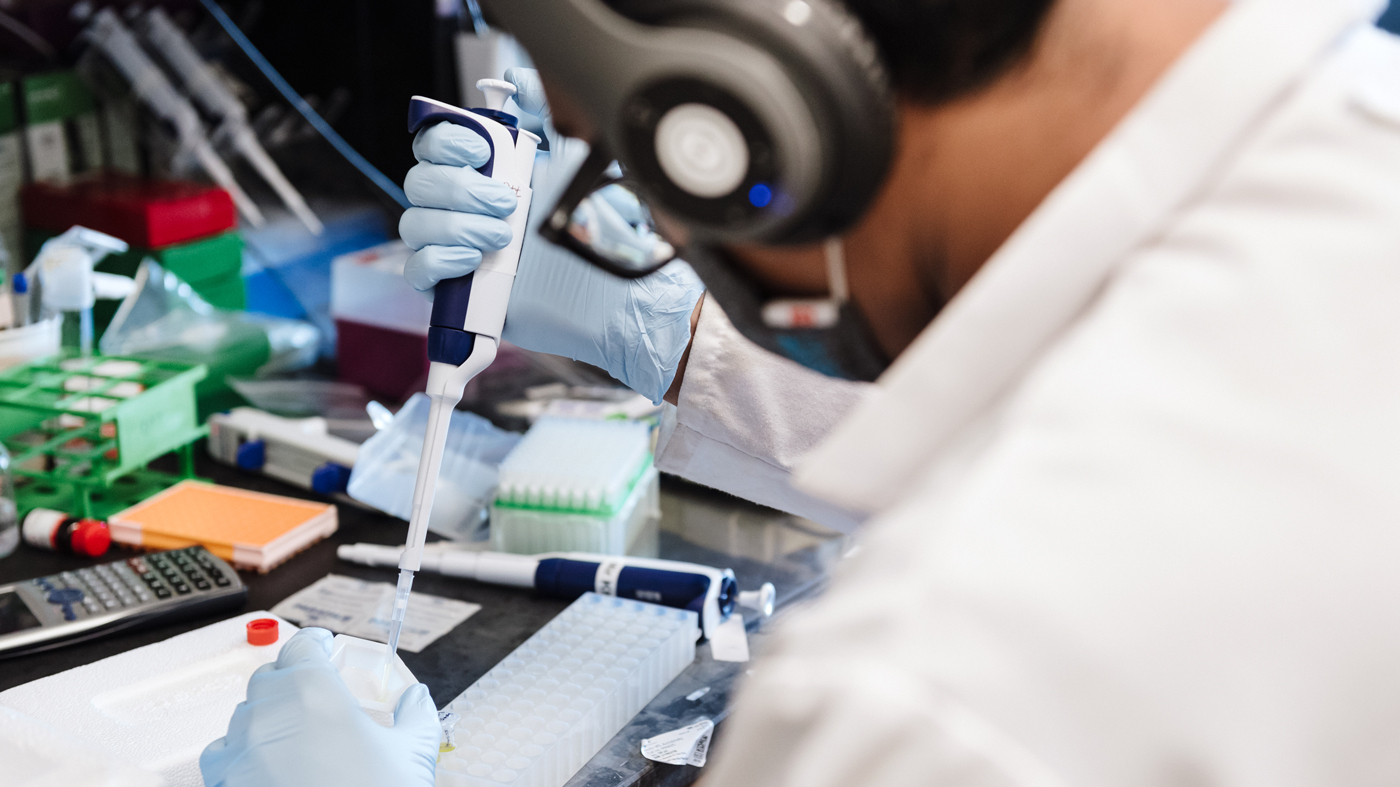
Scientists in Ott’s lab have developed new technologies to advance virology research.
What Achievements Are You Most Excited About?
We have developed a first-in-class diagnostic to detect SARS-CoV-2 infection. We wanted to generate a test that is as precise as a PCR test, but also as fast and convenient as the antigen tests that we do at home. We capitalized on an existing collaboration that we had with Gladstone Senior Investigator Jennifer Doudna, PhD, the CRISPR expert, and Dan Fletcher, PhD, a UC Berkeley professor and visiting investigator at Gladstone, who is an expert in building frugal diagnostic tools with cell phones. We built a test that directly detects the SARS-CoV-2 genetic material in a nasal swab and measures its abundance with a cell phone. This technology has enormous potential. We are now testing this tool to enable multiplexing, allowing it to simultaneously detect a variety of respiratory viruses.
We built new tools to rapidly generate natural viral variants in the lab (instead of waiting until somebody sends us a sample) and to safely study alterations of them. This has led to a new viral evolution research group led by Taha Taha, PhD, a Gladstone research investigator, who, together with Google, has developed an iterative AI:wet lab technology to predict the next SARS-CoV-2 variant of concern. Using a technology known as virus-like particles (VLPs) (originally developed in collaboration with the Doudna lab), we can now test hundreds of thousands of mutations at the same time to see which ones make the virus more or less fit. And this technology is safe and doesn’t need a BSL-3 facility. It is an empty viral particle that can’t replicate in human cells. I'm so excited about Taha’s work and its potential for this pandemic and others.
Finally, we have a beautiful Long COVID-neuroscience project underway, which is a collaboration with the labs of Roan and Jorge Palop, PhD, here at Gladstone. We study infected mice in our BSL-3 behavioral core. We record the behavior of the mice on video and then use AI to detect how they change their behavior, even in subtle ways. This work might help us understand the brain fog and memory problems that some people with Long COVID experience. It's actually super techy and super cool, and I think we are sort of at the forefront of this.
Did Philanthropy Play a Role in Your Success?
We could not have accomplished what we did without philanthropic support. Early on, the support from the government was relatively slow. The response from philanthropy, on the other hand, was immediate, and that helped us jumpstart all our efforts here. We certainly didn’t have any government funding for our early work. So philanthropy was a life-saving support that helped us build up the program and brought us to where we are.
That said, our work needs long-term support because we cannot wait until the next virus is here and then demand that we have all the tools and treatments ready for it. Our goal is to be ready for the next virus on day minus 20, not on day one. I think the key is to build up resources so that we can tackle any new virus the first day it emerges. And that takes resources, persistence, and a strategic plan.
What Is On the Horizon for Virology Research?
We have a really huge opportunity right now. As a virologist, I see that we're coming out of a life-changing pandemic that touched everybody. Both my team and Gladstone as a whole have been incredibly active in helping to understand this virus so that we can detect, prevent, or treat it better. We are still publishing on SARS-CoV-2 at record speed. We're certainly not slowing down on this.
We are excited to grow the expertise of GIV. We want to bring in experts in vaccine technology to support our ongoing efforts. I think it will be a very important area for us in the future. Another area where we are active and where we need resources is to actually predict what the next pandemic will be. And, since we are not fully out of the current pandemic, we need to predict what the next important SARS-CoV-2 variant will be and what vaccine we should generate.
Antivirals are another strong pillar at Gladstone, and we recently embarked on a large program led by Nevan Krogan, PhD to find new antivirals against coronaviruses and other RNA viruses that might be a threat in the future. We’re specifically putting a lot of effort into finding drugs that might be effective against many viruses at once.
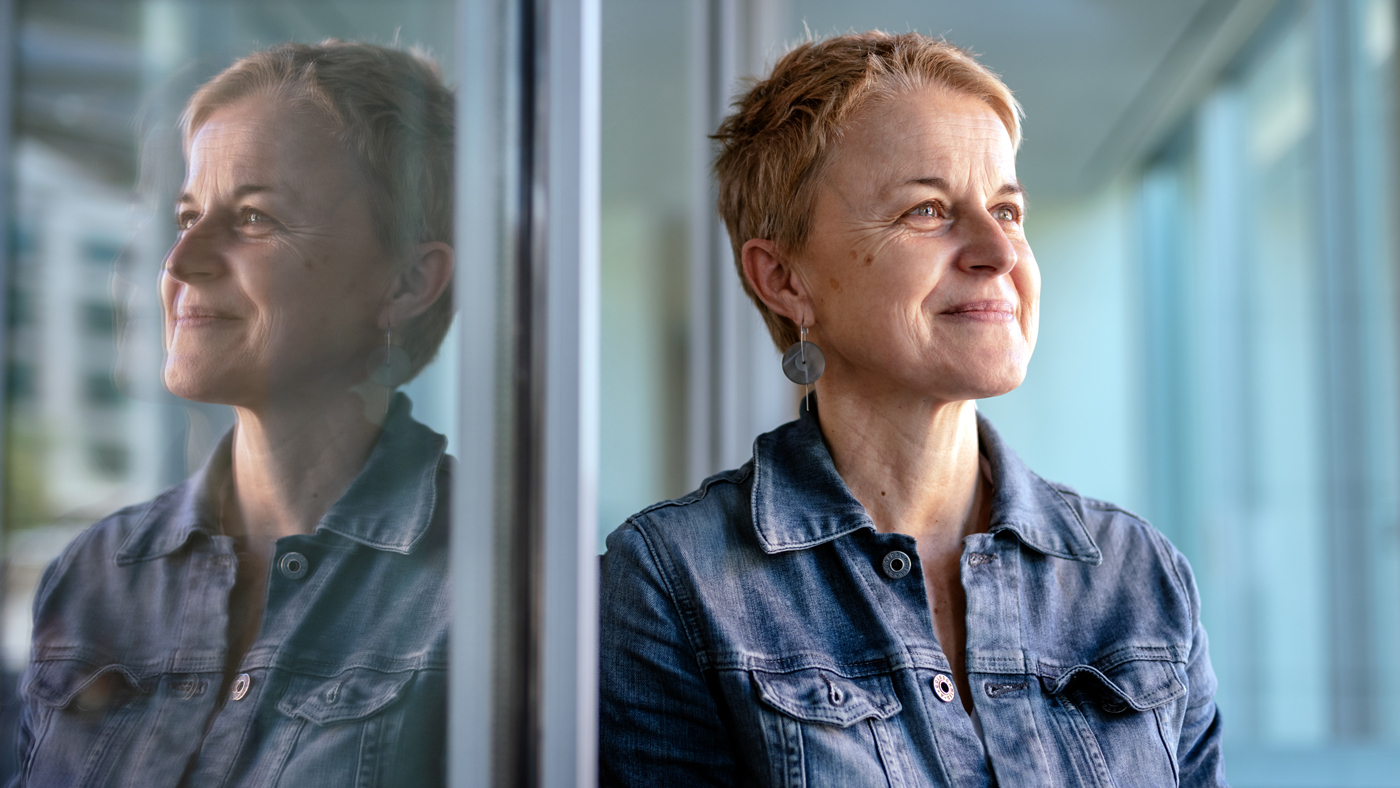
Ott’s Institute of Virology is even better prepared for the next pandemic.
How Are You Preparing for the Next Pandemic?
We learned a lot of lessons over the last three years. We developed technologies in record time, and I think now is the time to look into the future and make sure that we are much better prepared for the next pandemic.
What are the characteristics of SARS-CoV-2 that made it a worldwide pandemic? That's a very big question for us because that's what we are looking for in the next virus.
It's not so much the particular virus that is important for me. There are a lot of general lessons that we can learn across different viruses. One of the biggest commonalities of viruses is that they cannot live by themselves. They're completely dependent on the host, us, and they take what they need in order to propagate and replicate.
This interaction and this dependency is something that has kept my lab busy for the last 25 years, and all of the discoveries we have made so far will better prepare us for when the next pandemic emerges.
Featured Experts
Support Our COVID-19 Research Efforts
Gladstone scientists are moving quickly to respond to the coronavirus outbreak. Help us end this pandemic.
Science in Seconds | Researchers Pinpoint Key Gene Behind Heart Defects in Down Syndrome
Science in Seconds | Researchers Pinpoint Key Gene Behind Heart Defects in Down Syndrome
In this video, Gladstone scientists share how they used stem cells, gene editing, and AI to identify a gene driving heart defects in Down syndrome—and how reducing its levels in mice restored normal heart development, offering hope for future treatments
Gladstone Experts Cardiovascular Disease Data Science and Biotechnology Pollard Lab Srivastava Lab AI Big Data CRISPR/Gene Editing Human Genetics Stem Cells/iPSCsScience in Seconds | The Thinking Microscope: Research Powered by an AI Brain
Science in Seconds | The Thinking Microscope: Research Powered by an AI Brain
In this video, Steve Finkbeiner and Jeremy Linsley showcase Gladstone’s groundbreaking “thinking microscope”—an AI-powered system that can design, conduct, and analyze experiments autonomously to uncover new insights into diseases like Alzheimer’s, Parkinson’s, and ALS.
Gladstone Experts ALS Alzheimer’s Disease Parkinson’s Disease Neurological Disease Finkbeiner Lab AI Big DataVisualizing Stem Cell Technology: An Animated Explainer
Visualizing Stem Cell Technology: An Animated Explainer
In this animated short, Deepak Srivastava explains how scientists can reprogram ordinary skin or blood cells back in time—turning them into induced pluripotent stem cells which are capable of becoming any cell type in the body.
Gladstone Experts Stem Cells/iPSCs

